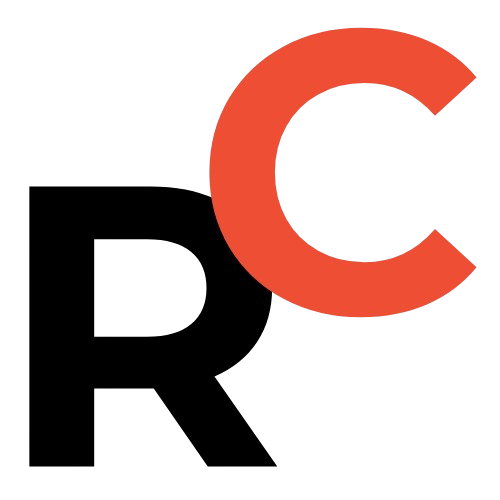Key Points
- PBOC (Zhōngguó Rénmín Yínháng 中国人民银行) 2025 Q3 guidance stresses stepped‑up use of structural monetary tools and the financial “five major tasks” to support the real economy.
- Introduces institutional measures — notably securities‑funds‑insurance swaps and stock‑repurchase re‑loans — aimed at improving liquidity coordination and stabilizing capital markets.
- Targets financing to priority areas: technology & innovation, consumption, SMEs, and export stabilization; keeps support for “Two Heavy” (Liang Zhong 两重) and “Two New” (Liang Xin 两新).
- Market impact depends on implementation — expect large banks to lead, tighter capital requirements for regional banks, and attention to eligibility rules for re‑loans and swap facilities.

PBOC urges use of securities, funds and insurance swaps to stabilize capital markets and channel targeted financing to priority sectors in 2025.
Quick summary — what the Monetary Policy Committee announced
The Monetary Policy Committee of the People’s Bank of China (PBOC; Zhōngguó Rénmín Yínháng 中国人民银行) held its 2025 third‑quarter meeting and issued guidance to shore up financial stability and support the real economy.
The committee emphasized stepped‑up use of structural monetary policy tools and targeted financing measures.
The goal: support innovation, boost consumption, help small and micro enterprises (SMEs), and stabilize foreign trade — while using institutional arrangements to maintain capital‑market stability.

Resume Captain
Your AI Career Toolkit:
- AI Resume Optimization
- Custom Cover Letters
- LinkedIn Profile Boost
- Interview Question Prep
- Salary Negotiation Agent

Key takeaways (read fast — action and priorities)
- Large banks should act as the primary force for providing financial services to the real economy.
- Smaller and regional banks should concentrate on core responsibilities and strengthen capital positions.
- Use structural monetary policy tools fully and focus on five broad financial priorities described as the financial “five major tasks“.
- Priority support areas include technology and innovation, boosting consumption, small‑and‑micro enterprises (SMEs), and stabilizing export‑oriented trade.
- Ensure financing for “Two Heavy” (Liang Zhong 两重) and “Two New” (Liang Xin 两新) — keep targeted credit flowing to key sectors and projects.
- Institutional arrangements recommended:
- Swap facilities among securities (zhèngquàn 证券), mutual funds (jījīn 基金), and insurance (bǎoxiǎn 保险) companies to improve liquidity coordination.
- Stock‑repurchase re‑loans to support buybacks and increase stabilizing share‑buyback activity in the market.
- Overall framing: measures aim to maintain steady development of China’s financial markets and align monetary policy with structural financing needs.

What this means for markets — practical implications
The guidance signals greater coordination across banking, securities, fund and insurance sectors to provide targeted liquidity and financing support.
For institutional investors and listed companies, the PBOC’s endorsement of structured re‑loan facilities tied to buybacks could lower barriers to share‑repurchase programs in certain circumstances.
Detailed implementing rules and eligibility criteria will determine the practical effect of stock‑repurchase re‑loans.
For corporates and regional finance providers, the emphasis on strengthening bank capital and focusing smaller banks on core duties suggests supervisory priorities will include risk control and capital adequacy.
Expect regulators to balance liquidity support with prudent risk management to avoid creating moral hazard while stabilizing markets.

Find Top Talent on China's Leading Networks
- Post Across China's Job Sites from $299 / role, or
- Hire Our Recruiting Pros from $799 / role
- Qualified Candidate Bundles
- Lower Hiring Costs by 80%+
- Expert Team Since 2014
Your First Job Post

How investors, founders, techies, and marketers should read this
- Investors: watch for guidance on eligibility and timing for stock‑repurchase re‑loans — these could enable targeted buybacks and liquidity support for eligible issuers.
- Founders & startups: sectors such as technology and innovation are explicitly prioritized, which can translate into easier targeted financing from policy banks and large commercial banks.
- Regional banks & fintechs: expect strengthened capital requirements and tighter supervisory focus; partnerships with larger banks may be the practical path to channeling policy support.
- Marketers & comms teams: prepare messaging around stability, financing access, and buyback programs if your firm is in a prioritized sector. Clarity on eligibility will be a competitive advantage.

ExpatInvest China
Grow Your RMB in China:
- Invest Your RMB Locally
- Buy & Sell Online in CN¥
- No Lock-In Periods
- English Service & Data
- Start with Only ¥1,000

Implementation watchlist — what to track next
- Official implementing rules for swap facilities among securities, funds and insurance companies.
- Details on stock‑repurchase re‑loan eligibility — which issuers qualify, loan terms, collateral rules, and disclosure requirements.
- Supervisory statements on capital buffers for small and regional banks, and any timelines for capital-strengthening measures.
- Coordination mechanisms across the PBOC (People’s Bank of China; Zhōngguó Rénmín Yínháng 中国人民银行), China Banking and Insurance Regulatory Commission, and securities regulators.
- Market reaction from large brokerage houses and institutional fund managers — these players will test swap and re‑loan mechanisms first.

Terminology & names (kept in original form with pinyin)
- People’s Bank of China (PBOC; Zhōngguó Rénmín Yínháng 中国人民银行)
- Bank(s) (yínháng 银行)
- Securities (zhèngquàn 证券)
- Fund(s) (jījīn 基金)
- Insurance (bǎoxiǎn 保险)
- “Two Heavy” (Liang Zhong 两重) and “Two New” (Liang Xin 两新) — original phrasing used in the committee statement to denote specific priority areas for financing support.

Actionable next steps for professionals
- Corporate treasurers: review buyback plans and prepare documentation in case stock‑repurchase re‑loan windows open.
- Bank risk teams: model post‑support capital ratios under potential re‑loan and swap usage scenarios.
- VCs and innovation funds: engage with partner banks and policy windows to accelerate financing for portfolio companies in prioritized sectors.
- IR and comms: prepare investor materials that explain how your firm could qualify for or benefit from the PBOC’s institutional arrangements.

Linking opportunities & SEO anchors
- Anchor: PBOC capital market stability — link to posts on China monetary policy or capital markets.
- Anchor: stock‑repurchase re‑loans — link to corporate finance or buyback policy pages.
- Anchor: securities‑funds‑insurance swaps — link to coverage of inter‑institutional liquidity tools or regulatory coordination.
- Anchor: Two Heavy Two New financing — link to in‑depth analysis on targeted credit for strategic projects.

Bottom line for readers
The PBOC’s 2025 Q3 guidance signals a more active, institutionally coordinated approach to stabilize capital markets and target financing toward innovation, consumption, SMEs, and export stabilization.
The two standout operational ideas — swap facilities among securities, funds and insurance companies and stock‑repurchase re‑loans — are designed to improve liquidity coordination and enable market stabilization tools for eligible issuers.
Implementation details will determine market impact, so prioritize monitoring formal rules, eligibility criteria, and supervisory comments in the coming weeks.
PBOC urges use of securities, funds and insurance swaps as a key lever to stabilize capital markets.





![China's A-Share Market Sees Surge: 1.92 Million New Accounts in April, Up 31% YoY Reveals Strong Investor Interest [FreshFromChina]](https://freshfromchina.com/wp-content/uploads/2025/05/chinas_a_share_market_sees_surge_192_million_new_accounts_in_april_up_31_yoy_reveals_strong_investor_interest.png____FreshFromChina-150x150.png)